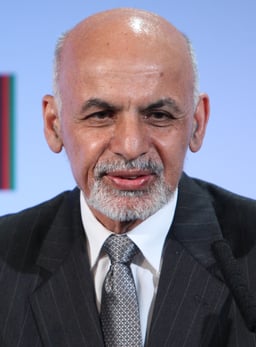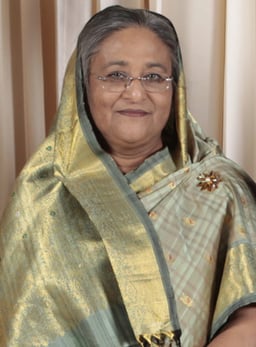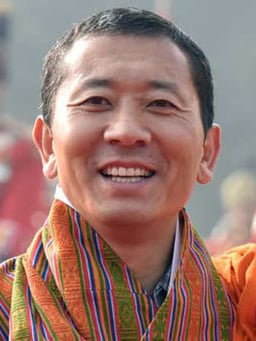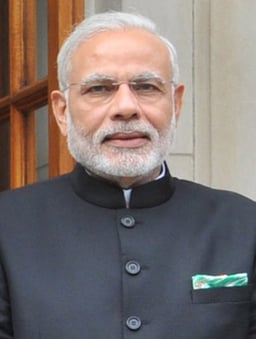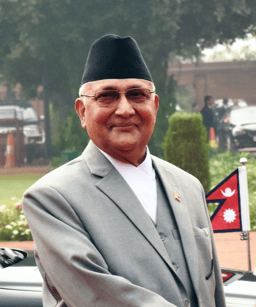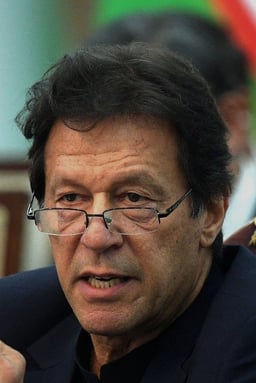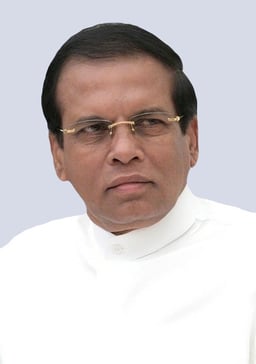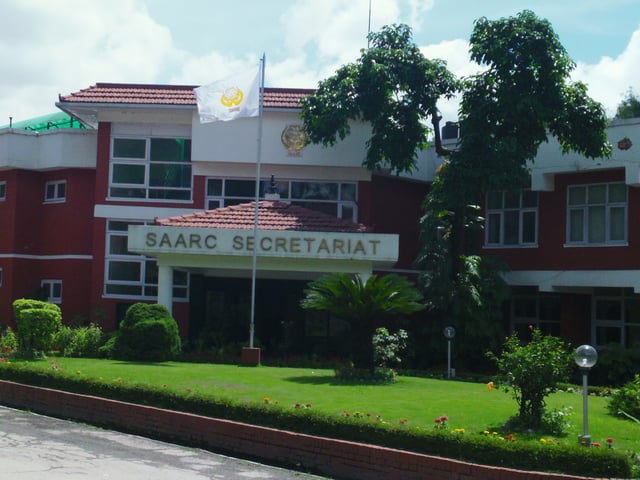South Asian Association for Regional Cooperation
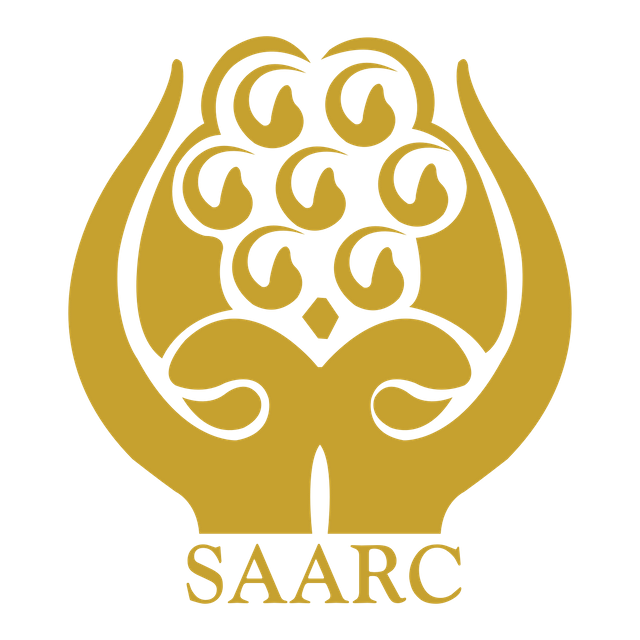
South Asian Association for Regional Cooperation

South Asian Association for Regional Cooperation(SAARC)
| |||||||||||||||||||||
|---|---|---|---|---|---|---|---|---|---|---|---|---|---|---|---|---|---|---|---|---|---|
 SAARC Region | |||||||||||||||||||||
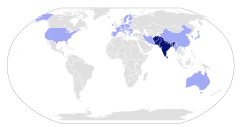 Member states Observer states | |||||||||||||||||||||
| Headquarters | Kathmandu | ||||||||||||||||||||
| Official languages | English | ||||||||||||||||||||
| Demonym(s) | South Asian | ||||||||||||||||||||
| Member states | 9 observers
| ||||||||||||||||||||
| Leaders | |||||||||||||||||||||
• Secretary-General | |||||||||||||||||||||
| Establishment | 8 December 1985 | ||||||||||||||||||||
| Area | |||||||||||||||||||||
• Total | 5,099,611 km2(1,968,971 sq mi) (7th) | ||||||||||||||||||||
• Water (%) | 6.8 | ||||||||||||||||||||
| Population | |||||||||||||||||||||
• 2015 estimate | 1,713,870,000[3] (1st) | ||||||||||||||||||||
• Density | 336.1/km2(870.5/sq mi) | ||||||||||||||||||||
| GDP(PPP) | 2017 estimate | ||||||||||||||||||||
• Total | US$11.64 trillion[4] (3rd) | ||||||||||||||||||||
| GDP(nominal) | 2017 estimate | ||||||||||||||||||||
• Total | US$ 3.31 trillion[4] (5th) | ||||||||||||||||||||
| Currency | 8 currencies
| ||||||||||||||||||||
| Time zone | UTC+4:30 to +6(Afghanistan Time(UTC+4:30), Pakistan Standard Time (PST), Maldives Time(both UTC+5:00), Indian Standard Time (IST), Sri Lanka Standard Time (SLST)(bothUTC+5:30), Nepal Standard Time (NST)(UTC+5:45), Bangladesh Standard Time (BST), Bhutan Time (bothUTC+6:00)) | ||||||||||||||||||||
| Calling code | |||||||||||||||||||||
| Internet TLD | .asia[1] | ||||||||||||||||||||
The South Asian Association for Regional Cooperation (SAARC) is the regional intergovernmental organization and geopolitical union of states in South Asia. Its member states include Afghanistan, Bangladesh, Bhutan, India, the Maldives, Nepal, Pakistan and Sri Lanka. SAARC comprises 3% of the world's area, 21% of the world's population and 3.8% (US$2.9 trillion)[4] of the global economy, as of 2015.
SAARC was founded in Dhaka on 8 December 1985.[5] Its secretariat is based in Kathmandu, Nepal. The organization promotes development of economic and regional integration.[6] It launched the South Asian Free Trade Area in 2006.[7] SAARC maintains permanent diplomatic relations at the United Nations as an observer and has developed links with multilateral entities, including the European Union.
South Asian Association for Regional Cooperation(SAARC)
| |||||||||||||||||||||
|---|---|---|---|---|---|---|---|---|---|---|---|---|---|---|---|---|---|---|---|---|---|
 SAARC Region | |||||||||||||||||||||
 Member states Observer states | |||||||||||||||||||||
| Headquarters | Kathmandu | ||||||||||||||||||||
| Official languages | English | ||||||||||||||||||||
| Demonym(s) | South Asian | ||||||||||||||||||||
| Member states | 9 observers
| ||||||||||||||||||||
| Leaders | |||||||||||||||||||||
• Secretary-General | |||||||||||||||||||||
| Establishment | 8 December 1985 | ||||||||||||||||||||
| Area | |||||||||||||||||||||
• Total | 5,099,611 km2(1,968,971 sq mi) (7th) | ||||||||||||||||||||
• Water (%) | 6.8 | ||||||||||||||||||||
| Population | |||||||||||||||||||||
• 2015 estimate | 1,713,870,000[3] (1st) | ||||||||||||||||||||
• Density | 336.1/km2(870.5/sq mi) | ||||||||||||||||||||
| GDP(PPP) | 2017 estimate | ||||||||||||||||||||
• Total | US$11.64 trillion[4] (3rd) | ||||||||||||||||||||
| GDP(nominal) | 2017 estimate | ||||||||||||||||||||
• Total | US$ 3.31 trillion[4] (5th) | ||||||||||||||||||||
| Currency | 8 currencies
| ||||||||||||||||||||
| Time zone | UTC+4:30 to +6(Afghanistan Time(UTC+4:30), Pakistan Standard Time (PST), Maldives Time(both UTC+5:00), Indian Standard Time (IST), Sri Lanka Standard Time (SLST)(bothUTC+5:30), Nepal Standard Time (NST)(UTC+5:45), Bangladesh Standard Time (BST), Bhutan Time (bothUTC+6:00)) | ||||||||||||||||||||
| Calling code | |||||||||||||||||||||
| Internet TLD | .asia[1] | ||||||||||||||||||||
Historical background

A clickable Euler diagram showing the relationships between various Asian regional organisations v • d • e [67]
In the ending years of the 1970s, the seven inner South Asian nations that included Bangladesh, Bhutan, India, Maldives, Nepal, Pakistan, and Sri Lanka agreed upon the creation of a trade bloc and to provide a platform for the people of South Asia to work together in a spirit of friendship, trust, and understanding. President Ziaur Rahman later addressed official letters to the leaders of the countries of the South Asia, presenting his vision for the future of the region and the compelling arguments for region.[9] During his visit to India in December 1977, Rahman discussed the issue of regional cooperation with the Indian Prime Minister, Morarji Desai. In the inaugural speech to the Colombo Plan Consultative Committee which met in Kathmandu also in 1977, King Birendra of Nepal gave a call for close regional cooperation among South Asian countries in sharing river waters.[10]
After the USSR's intervention in Afghanistan, the efforts to establish the union was accelerated in 1979 and the resulting rapid deterioration of South Asian security situation.[10] Responding to Rahman and Birendra's convention, the officials of the foreign ministries of the seven countries met for the first time in Colombo in April 1981.[10] The Bangladeshi proposal was promptly endorsed by Nepal, Sri Lanka, Bhutan, and the Maldives but India and Pakistan were sceptical initially.[10] The Indian concern was the proposal's reference to the security matters in South Asia and feared that Rahman's proposal for a regional organisation might provide an opportunity for new smaller neighbours to re-internationalise all bilateral issues and to join with each other to form an opposition against India. Pakistan assumed that it might be an Indian strategy to organise the other South Asian countries against Pakistan and ensure a regional market for Indian products, thereby consolidating and further strengthening India's economic dominance in the region.[10]
However, after a series of diplomatic consultations headed by Bangladesh between South Asian U.N. representatives at the UN headquarters in New York, from September 1979 to 1980, it was agreed that Bangladesh would prepare the draft of a working paper for discussion among the foreign secretaries of South Asian countries.[10] The foreign secretaries of the inner seven countries again delegated a Committee of the Whole in Colombo on September 1981, which identified five broad areas for regional cooperation. New areas of co-operation were added in the following years.[11]
In 1983, the international conference held in Dhaka by its Ministry of Foreign Affairs, the foreign ministers of the inner seven countries adopted the Declaration on South Asian Association Regional Cooperation (SAARC) and formally launched the Integrated Programme of Action (IPA) initially in five agreed areas of cooperation namely, Agriculture; Rural Development; Telecommunications; Meteorology; and Health and Population Activities.[12]
Officially, the union was established in Dhaka with Kathmandu being union's secretariat-general.[13] The first SAARC summit was held in Dhaka on 7–8 December 1985 and hosted by the President of Bangladesh Hussain Ershad.[14] The declaration signed by King of Bhutan Jigme Singye Wangchuk, President of Pakistan Zia-ul-Haq, Prime Minister of India Rajiv Gandhi, King of Nepal Birendra Shah, President of Sri Lanka JR Jayewardene, and President of Maldives Maumoon Gayoom.[14]
Members and observers
Economic data is sourced from the International Monetary Fund, current as of April 2015, and is given in US dollars.[15]
Members
| Country | Population[16] (2016) | GDP (Nominal) | GDP (PPP) | GDP per Capita (PPP) | GDP Growth Rate (2018) | Exports (2018) | Foreign Direct Investment (2018) | Foreign Exchange Reserves(million) | Defense Budget(% of GDP) (2014)[17] | Literacy Rate(Given Age & above) | Life Expectancy | Population below Poverty Line | Primary School Enrollment [18] | Secondary School enrollment [19] | Population undernourished(%) (2015)[20] | Human Development Index | Democracy Index | Global Terrorism Index | G20 | BRICS | BIMSTEC | IORA | APTA | BBIN | SASEC | AIIB | ACU | ACD | ADB | World Bank | Nuclear Weapons |
|---|---|---|---|---|---|---|---|---|---|---|---|---|---|---|---|---|---|---|---|---|---|---|---|---|---|---|---|---|---|---|---|
| 34,656,032 | $19,585 billion | $72,911 billion | $2,017 | 2.3% | $0.784 billion | N/A | $6,442 | N/A | 38.2%(Age 15) | 63.67 | 42% | N/A | 54% | 26.8% | 0.498 (168) | 2.97 (143) | 9.233 (2) | ✖ | ✖ | ✖ | ✖ | ✖ | ✖ | ✖ | ✖ | ✖ | ✔ | ✔ | ✔ | ✖ | |
| 162,951,560 | $314,656 billion | $831,750 billion | $4,992 | 7.7% | $46,879 billion | $3.61 billion | $32,000 | $3.87 billion(1.2%) | 75.4%(Age 15) | 72.49 | 8.1% | 92% | 54% | 16.4% | 0.608 (136) | 5.57 (88) | 0 (124) | ✖ | ✖ | ✔ | ✔ | ✔ | ✔ | ✔ | ✔ | ✔ | ✔ | ✔ | ✔ | ✖ | |
| 797,765 | $2,627 billion | $7,701 billion | $9,540 | 6.4% | $0,580 billion | $63 million | N/A | N/A | 59.5%(age 15) | 70.20 | 12% | 91% | 78% | N/A | 0.612 (134) | 5.30 (94) | 0.305 (107) | ✖ | ✖ | ✔ | ✖ | ✖ | ✔ | ✔ | ✖ | ✔ | ✔ | ✔ | ✔ | ✖ | |
| 1,324,171,354 | $2,716,746 billion | $10,505.288 billion | $7874 | 7.0% | $303,400 billion | $31 billion | $422,532.5 | $45 billion (1.9%) | 74.04%(Age 15) | 68.56 | 3.7% | 92% | 75% | 15.2% | 0.640 (130) | 7.23 (41) | 4.222 (39) | ✔ | ✔ | ✔ | ✔ | ✔ | ✔ | ✔ | ✔ | ✔ | ✔ | ✔ | ✔ | ✔ | |
| 427,756 | $5,302 billion | $7,936 billion | $21,760 | 6.9% | $0.256.2 billion | N/A | $356 | N/A | 98.61%%(age 15) | 77.34 | 16% | N/A | N/A | 5.2% | 0.717 (101) | __ | __ | ✖ | ✖ | ✖ | ✖ | ✖ | ✖ | ✔ | ✔ | ✔ | ✖ | ✔ | ✔ | ✖ | |
| 28,982,771 | $28,812 billion | $84,365 billion | $2,905 | 6.2% | $0.818.7 billion | $10 million | $5,439 | N/A | 64.7%(age 15) | 70.25 | 6% | 98% | 67% | 7.8% | 0.574 (149) | 5.18 (97) | 4.791 (32) | ✖ | ✖ | ✔ | ✖ | ✖ | ✔ | ✔ | ✔ | ✔ | ✔ | ✔ | ✔ | ✖ | |
| 193,203,476 | $278,019 billion | $1,141.21 billion | $5,839 | 3.29% | $21,940 billion | $0.709 billion (2014) | $16,305 | $7.4 billion (3.5%) | 58%(age 15) | 66.48 | 24.3% | 72% | 34% | 22% | 0.562 (150) | 4.17 (112) | 10 (1) | ✖ | ✖ | ✖ | ✖ | ✖ | ✖ | ✖ | ✔ | ✔ | ✔ | ✔ | ✔ | ✔ | |
| 20,798,492 | $88,223 billion | $290.561 billion | $13,397 | 3.0% | $10.930 billion | $0.9 billion | $8,314 | $1.4 billion(2.3%) | 93.2%(age 15) | 75.28 | 6.7% | 94% | 99% | 22% | 0.770 (76) | 6.19 (71) | 4.077 (42) | ✖ | ✖ | ✔ | ✔ | ✔ | ✖ | ✔ | ✔ | ✔ | ✔ | ✔ | ✔ | ✖ |
SAARC was founded by seven states in 1985. In 2005, Afghanistan began negotiating their accession to SAARC and formally applied for membership on the same year.[22][23] The issue of Afghanistan joining SAARC generated a great deal of debate in each member state, including concerns about the definition of South Asian identity because Afghanistan is a Central Asian country.[24]
Observers
On 2 August 2006, the foreign ministers of the SAARC countries agreed in principle to grant observer status to three applicants;[31] the US and South Korea (both made requests in April 2006),[31] as well as the European Union (requested in July 2006).[32] On 4 March 2007, Iran requested observer status,[33] followed shortly by Mauritius.
Potential future members
Secretariat
Regional Centres
The SAARC Secretariat is supported by following Regional Centres established in the Member States to promote regional co-operation. These Centres are managed by Governing Boards comprising representatives from all the Member States, SAARC Secretary-General and the Ministry of Foreign/External Affairs of the Host Government. The Director of the Centre acts as Member Secretary to the Governing Board which reports to the Programming Committee. After 31 December 2015, there 6 regional centers were stopped by unanimous decision. These are SMRC, SFC, SDC, SCZMC, SIC, SHRDC.[40]
| Regional Centre | Location | Country | Website |
|---|---|---|---|
| SAARC Agricultural Centre (SAC) | Dhaka | Bangladesh | Official website [68] |
| SAARC Meteorological Research Centre (SMRC) | Dhaka | Bangladesh | |
| SAARC Forestry Centre (SFC) | Thimphu | Bhutan | |
| SAARC Development Fund (SDF) | Thimphu | Bhutan | Official website [69] |
| SAARC Documentation Centre (SDC) | New Delhi | India | |
| SAARC Disaster Management Centre (SDMC) | Gandhinagar | India | Official website [70] |
| SAARC Coastal Zone Management Centre (SCZMC) | Malé | Maldives | |
| SAARC Information Centre (SIC) | Kathmandu | Nepal | |
| SAARC Tuberculosis and HIV/AIDS Centre (STAC) | Kathmandu | Nepal | Official website [71] |
| SAARC Human Resources Development Centre (SHRDC) | Islamabad | Pakistan | |
| SAARC Energy Centre (SEC) | Islamabad | Pakistan | Official website [72] |
| SAARC Cultural Centre (SCC) | Colombo | Sri Lanka | Official website [73] |
Anthem
SAARC does not have an official anthem like some other regional organisations (e.g. ASEAN).[41]
Apex and Recognised Bodies
SAARC has six Apex Bodies,[42] they are-
SAARC Chamber of Commerce & Industry (SCCI),
South Asian Association for Regional Cooperation in Law(SAARCLAW),[43]
South Asian Federation of Accountants (SAFA),
South Asia Foundation (SAF),
South Asia Initiative to End Violence Against Children (SAIEVAC),
Foundation of SAARC Writers and Literature (FOSWAL)
Amjad Hussain B. Sial is the current Secretary General of SAARC.
SAARC also has about 17 recognised bodies.[42]
SAARC Disaster Management Centre
South Asian Association of Regional Cooperation (SAARC) Disaster Management Centre (SDMC-IU) has been set up at Gujarat Institute of Disaster Management (GIDM) Campus, Gandhinagar, Gujarat, India. Eight Member States, i.e. Afghanistan, Bangladesh, Bhutan, India, Maldives, Nepal, Pakistan and Sri Lanka are expected to be served by the SDMC (IU). It is entrusted with the responsibility of serving Member States by providing policy advice, technical support on system development, capacity building services and training for holistic management of disaster risk in the SAARC region. The centre also facilitates exchange of information and expertise for effective and efficient management of disaster risk.
Political issues
Lasting peace and prosperity in South Asia has been elusive because of the various ongoing conflicts in the region. Political dialogue is often conducted on the margins of SAARC meetings which have refrained from interfering in the internal matters of its member states.[44] During the 12th and 13th SAARC summits, extreme emphasis was laid upon greater cooperation between the SAARC members to fight terrorism.[45][46]
South Asian Free Trade Area
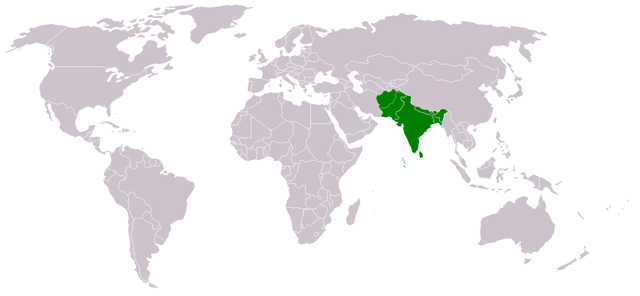
Countries under the South Asian Free Trade Area
SAFTA was envisaged primarily as the first step towards the transition to a South Asian Free Trade Area (SAFTA) leading subsequently towards a Customs Union, Common Market and the Economic Union. In 1995, Sixteenth session of the Council of Ministers (New Delhi, 18–19 December 1995) agreed on the need to strive for the realisation of SAFTA and to this end, an Inter-Governmental Expert Group (IGEG) was set up in 1996 to identify the necessary steps for progressing to a free trade area. The Tenth SAARC Summit (Colombo, 29–31 July 1998) decided to set up a Committee of Experts (COE) to draft a comprehensive treaty framework for creating a free trade area within the region, taking into consideration the asymmetries in development within the region and bearing in mind the need to fix realistic and achievable targets.
The SAFTA Agreement was signed on 6 January 2004 during Twelfth SAARC Summit held in Islamabad, Pakistan. The Agreement entered into force on 1 January 2006, and the Trade Liberalisation Programme commenced from 1 July 2006. Under this agreement, SAARC members will bring their duties down to 20 percent by 2009. Following the Agreement coming into force the SAFTA Ministerial Council (SMC) has been established comprising the Commerce Ministers of the Member States.[51] In 2012 the SAARC exports increased substantially to US$354.6 billion from US$206.7 billion in 2009. Imports too increased from US$330 billion to US$602 billion over the same period. But the intra-SAARC trade amounts to just a little over 1% of SAARC's GDP. In contrast to SAARC, in ASEAN (which is actually smaller than SAARC in terms of the size of the economy) the intra-bloc trade stands at 10% of its GDP.
SAFTA was envisaged to gradually move towards the South Asian Economic Union, but the current intra-regional trade and investment relation are not encouraging and it may be difficult to achieve this target. The SAARC intra-regional trade stands at just five percent on the share of intra-regional trade in overall trade in South Asia. Similarly, foreign direct investment is also dismal. The intra-regional FDI flow stands at around four percent of the total foreign investment.[52]
The Asian Development Bank has estimated that inter-regional trade in SAARC region possessed the potential of shooting up agricultural exports by $14 billion per year from existing level of $8 billion to $22 billion. The study by Asian Development Bank states that against the potential average SAARC intra-regional trade of $22 billion per year, the actual trade in South Asia has been only around $8 billion. The uncaptured potential for intra-regional trade is therefore $14 billion per year, i.e. 68%.[53][54]
SAARC Visa Exemption Scheme
The SAARC Visa Exemption Scheme was launched in 1992. The leaders at the Fourth Summit (Islamabad, 29–31 December 1988), realizing the importance of people-to-people contact among SAARC countries, decided that certain categories of dignitaries should be entitled to a Special Travel document. The document would exempt them from visas within the region. As directed by the Summit, the Council of Ministers regularly kept under review the list of entitled categories.
Currently, the list included 24 categories of entitled persons, which include dignitaries, judges of higher courts, parliamentarians, senior officials, entrepreneurs, journalists, and athletes.
The Visa Stickers are issued by the respective Member States to the entitled categories of that particular country. The validity of the Visa Sticker is generally for one year. The implementation is reviewed regularly by the Immigration Authorities of SAARC Member States.[55]
Awards
SAARC Award
The Twelfth (12th) Summit approved the SAARC Award to support individuals and organisations within the region. The main aims of the SAARC Award are:
To encourage individuals and organisations based in South Asia to undertake programmes and activities that complement the efforts of SAARC
To encourage individuals and organisations in South Asia contributing to bettering the conditions of women and children
To honour outstanding contributions and achievements of individuals and organisations within the region in the fields of peace, development, poverty alleviation, environmental protection, and regional cooperation
To honour any other contributions and achievement not covered above of individuals and organisations in the region.
The SAARC Award consists of a gold medal, a letter of citation, and cash prize of US$25,000 (₹15 lakhs). Since the institution of the SAARC Award in 2004, it has been awarded only once and the Award was posthumously conferred upon the late President Ziaur Rahman of Bangladesh.[56]
SAARC Literary Award
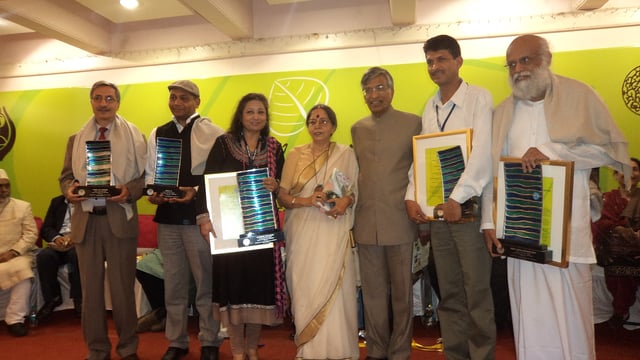
Recipients of SAARC Literary Award 2013
The SAARC Literary Award is an annual award conferred by the Foundation of SAARC Writers and Literature (FOSWAL) since 2001[57][58] which is an apex SAARC body.[59] Shamshur Rahman, Mahasweta Devi, Jayanta Mahapatra, Abhi Subedi, Mark Tully, Sitakant Mahapatra, Uday Prakash, Suman Pokhrel and Abhay K are some of the prominent recipients of this award.[60]
Nepali poet, lyricist, and translator Suman Pokhrel is the only poet/writer to get this award twice.[61]
SAARC Youth Award
The SAARC Youth Award is awarded to outstanding individuals from the SAARC region. The award is notable because of the recognition it gives to the Award winner in the SAARC region. The award is based on specific themes which apply to each year. The award recognises and promotes the commitment and talent of the youth who give back to the world at large through various initiatives such as Inventions, Protection of the Environment and Disaster relief. The recipients who receive this award are ones who have dedicated their lives to their individual causes to improve situations in their own countries as well as paving a path for the SAARC region to follow. The Committee for the SAARC Youth Award selects the best candidate based on his/her merits and their decision is final.[62]
Previous Winners:
1997: Outstanding Social Service in Community Welfare – Mohammed Sukur Salek (Bangladesh)
1998: New Inventions and Shanu — Najmul Hasnain Shah (Pakistan)
2001: Creative Photography: South Asian Diversity – Mushfiqul Alam (Bangladesh)
2002: Outstanding contribution to protect the Environment – Masil Khan (Pakistan)
2003: Invention in the Field of Traditional Medicine – Hassan Sher (Pakistan)
2004: Outstanding contribution to raising awareness of TB and/or HIV/AIDS – Ajij Prasad Poudyal (Nepal)
2006: Promotion of Tourism in South Asia – Syed Zafar Abbas Naqvi (Pakistan)
2008: Protecting the Environment in South Asia – Uswatta Liyanage Deepani Jayantha (Sri Lanka)
2009: Outstanding contribution to humanitarian works in the aftermath of Natural Disasters – Ravikant Singh (India)
2010: Outstanding contribution for the Protection of Environment and mitigation of Climate Change – Anoka Primrose Abeyrathne (Sri Lanka)
Secretaries-General of SAARC
| Name | Country | Took office | Left office | |
|---|---|---|---|---|
| 1 | Abul Ahsan | 16 January 1985 | 15 October 1989 | |
| 2 | Kant Kishore Bhargava | 17 October 1989 | 31 December 1991 | |
| 3 | Ibrahim Hussein Zaki | 1 January 1992 | 31 December 1993 | |
| 4 | Yadav Kant Silwal | 1 January 1994 | 31 December 1995 | |
| 5 | Naeem U. Hasan | 1 January 1996 | 31 December 1998 | |
| 6 | Nihal Rodrigo | 1 January 1999 | 10 January 2002 | |
| 7 | Q. A. M. A. Rahim | 11 January 2002 | 28 February 2005 | |
| 8 | Chenkyab Dorji | 1 March 2005 | 29 February 2008 | |
| 9 | Sheel Kant Sharma | 1 March 2008 | 28 February 2011 | |
| 10 | Fathimath Dhiyana Saeed | 1 March 2011 | 11 March 2012 | |
| 11 | Ahmed Saleem | 12 March 2012 | 28 February 2014 | |
| 12 | Arjun Bahadur Thapa | 1 March 2014 | 28 February 2017 | |
| 13 | Amjad Hussain B. Sial | 1 March 2017 | Incumbent |
SAARC summits
| No | Date | Country | Host | Host leader |
|---|---|---|---|---|
| 1st | 7–8 December 1985 | Bangladesh | Dhaka | Ataur Rahman Khan |
| 2nd | 16–17 November 1986 | India | Bengaluru | Rajiv Gandhi |
| 3rd | 2–4 November 1987 | Nepal | Kathmandu | King Birendra Bir Bikram Shah |
| 4th | 29–31 December 1988 | Pakistan | Islamabad | Benazir Bhutto |
| 5th | 21–23 November 1990 | Maldives | Malé | Maumoon Abdul Gayoom |
| 6th | 21 December 1991 | Sri Lanka | Colombo | Ranasinghe Premadasa |
| 7th | 10–11 April 1993 | Bangladesh | Dhaka | Khaleda Zia |
| 8th | 2–4 May 1995 | India | New Delhi | P V Narasimha Rao |
| 9th | 12–14 May 1997 | Maldives | Malé | Maumoon Abdul Gayoom |
| 10th | 29–31 July 1998 | Sri Lanka | Colombo | Chandrika Kumaratunga |
| 11th | 4–6 January 2002 | Nepal | Kathmandu | Sher Bahadur Deuba |
| 12th | 2–6 January 2004 | Pakistan | Islamabad | Zafarullah Khan Jamali |
| 13th | 12–13 November 2005 | Bangladesh | Dhaka | Khaleda Zia |
| 14th | 3–4 April 2007 | India | New Delhi | Manmohan Singh |
| 15th | 1–3 August 2008 | Sri Lanka | Colombo | Mahinda Rajapaksa |
| 16th | 28–29 April 2010 | Bhutan | Thimphu | Jigme Thinley |
| 17th | 10–11 November 2011 | Maldives | Addu | Mohammed Nasheed |
| 18th | 26–27 November 2014[63] | Nepal | Kathmandu | Sushil Koirala |
| 19th | 9–10 November 2016 | Pakistan | Islamabad | Cancelled |
| 20th | 2019 | Sri Lanka | Colombo | Maithripala Sirisena |
Current leaders of SAARC
Current leaders
| Country | President | Prime Minister |
|---|---|---|
| Afghanistan | Ashraf Ghani | Abdullah Abdullah (CEO) |
| Bangladesh | Abdul Hamid | Sheikh Hasina |
| Bhutan | King Jigme Khesar Namgyel Wangchuck | Lotay Tshering |
| India | Ram Nath Kovind | Narendra Modi |
| Maldives | Ibrahim Mohamed Solih | |
| Nepal | Bidhya Devi Bhandari | Khadga Prasad Oli |
| Pakistan | Arif Alvi | Imran Khan |
| Sri Lanka | Maithripala Sirisena | Ranil Wickremesinghe |
See also
ASEAN and India's Look-East connectivity projects
Asia Cooperation Dialogue
SAARC Chamber of Commerce and Industry
Bangladesh Bhutan India Nepal Initiative
BIMSTEC
Indian-Ocean Rim Association
List of SAARC summits
Mekong–Ganga Cooperation
SAARC satellite
South Asian University
South Asia Subregional Economic Cooperation
Shanghai Cooperation Organisation
